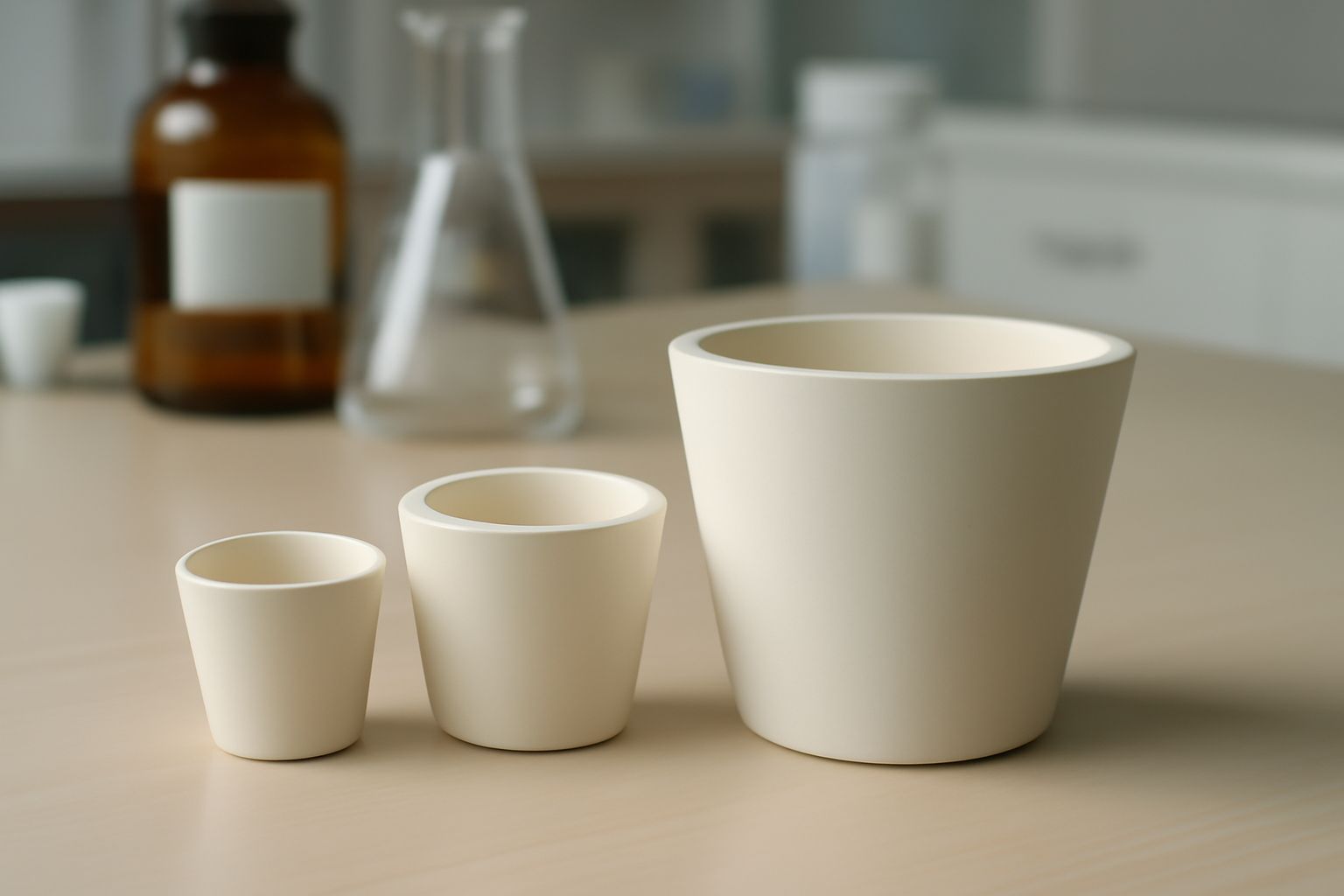Your cart is empty.
shop now
Your cart is empty.
shop now
Laboratory budgets are tight, but low-quality crucibles quickly turn smart savings into wasted money and failed experiments. The wrong choice leads to lost time and costly downtime.
You can find affordable, high-quality laboratory crucibles by searching for trusted suppliers who offer transparent specifications, wide material options, and technical support. Reliable vendors balance price, quality, and long-term durability for lab applications.

I always start my search by listing technical needs, then comparing suppliers’ test records and after-sales support options. This process helps me avoid disappointment and reduces lab costs in the long term.
Some labs try to save by buying lower-grade crucibles, but the price of replacement and repairs adds up fast. High-precision work suffers from the consequences of these shortcuts.
Laboratory crucibles are costly because premium materials like platinum or zirconia withstand extreme temperatures and chemicals, ensuring longevity and test accuracy, but these advantages raise upfront costs for labs.
| Material | Max Temp Resistance | Durability/Usage | Price Range (USD) |
|---|---|---|---|
| Platinum | Up to 1770℃ | Extremely high, reusable for years (Platinum info) | 300–1500+ |
| Zirconia | Up to 2200℃ | Excellent for harsh tests, less risk of breakage | 100–300 |
| Alumina | Up to 1700℃ | Strong for everyday high-temp use | 20–80 |
| Porcelain | Up to 1050℃ | Low cost, good for basic tests | 5–15 |
I have seen platinum crucibles last for hundreds of cycles without cracking, making their high cost worthwhile over time. The investment pays off when labs deal with aggressive chemicals and strict thermal analysis protocols, keeping equipment safe and results accurate for years.
Each material or test asks for a different type of crucible. Using the wrong kind will lead to contamination or destruction of the sample or the vessel.
I select the right laboratory crucible by matching its material to my test’s maximum temperature and chemical compatibility, then checking size, wall thickness, and fit to lab equipment.
| Testing Application | Preferred Crucible Type | Selection Reason |
|---|---|---|
| High-temp fusion | Platinum or zirconia | Survives aggressive heat, low contamination (Zirconia info) |
| Routine ashing | Porcelain or alumina | Resists minor shocks, lower price suits bulk use |
| Trace analysis | High-purity platinum | Avoids leaching, precise results for sensitive studies |
| Chemical mixing | Alumina or quartz | Handles acids, heat, and does not react with samples |
My choice always starts from a test’s demands. I also review the chemical compatibility charts and recheck new suppliers’ product data before making a final decision. Asking vendors for real-life test certificates further reduces the risk of buying unsuitable labware.
Looking at price alone can lead to buying products that fail under heat or contaminate precious samples. Not all suppliers are equally reliable.
I look for verified material quality, detailed specs, proof of temperature ratings, and fast support from the supplier before I buy any laboratory crucible for my lab.
| Check Item | What to Confirm | Why it Matters |
|---|---|---|
| Material Purity Certificate | Analysis report, matching industry standard | Proves claim of high-purity; avoids contamination |
| Technical Specs Sheet | Walls, dimensions, compatible devices | Ensures safe use and fitting |
| Temperature Test Data | Real-world trial results | Verifies real usage claims (Lab equipment info) |
| After-Sales Support | Returns, answers, custom orders | Easy solutions if any issue appears |
Reliable suppliers can provide test documents and guide you through selection. Ordering samples and reviewing detailed photos make sure the chosen crucible matches your actual lab needs. Avoiding unknown brands reduces risk.
Some research needs cannot be met with off-the-shelf products. Custom crucibles look expensive first, but offer benefits that make them a better investment over time.
I find custom laboratory crucibles worth the investment when my experiments require unique shapes, materials, or extreme resistance. Custom orders also reduce long-term wear on regular labware used in harsh testing.
| Feature | Standard Crucible | Custom Crucible |
|---|---|---|
| Exact Fit to Equipment | Sometimes mismatched, may lead to errors | Perfect fit, higher test reliability |
| Material Choice | Limited, only common types | Tailored alloys or ceramics (Ceramic info) |
| Resistance to Wear | Shorter life with extreme cycles | Longer use with repeated, demanding tests |
| Total Cost Over Time | Frequent replacements | Fewer replacements, less downtime, saves money |
Custom orders become cost-effective when your testing process is unique or requires repeated harsh exposure. Industry data (ScienceDirect, 2024) shows specialized labs spending more upfront, but saving long-term by reducing test errors and equipment damage. I recommend custom solutions for research that cannot risk basic product failure.